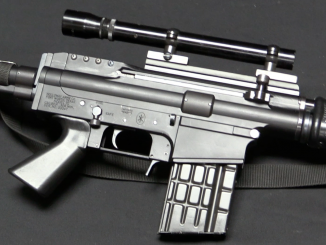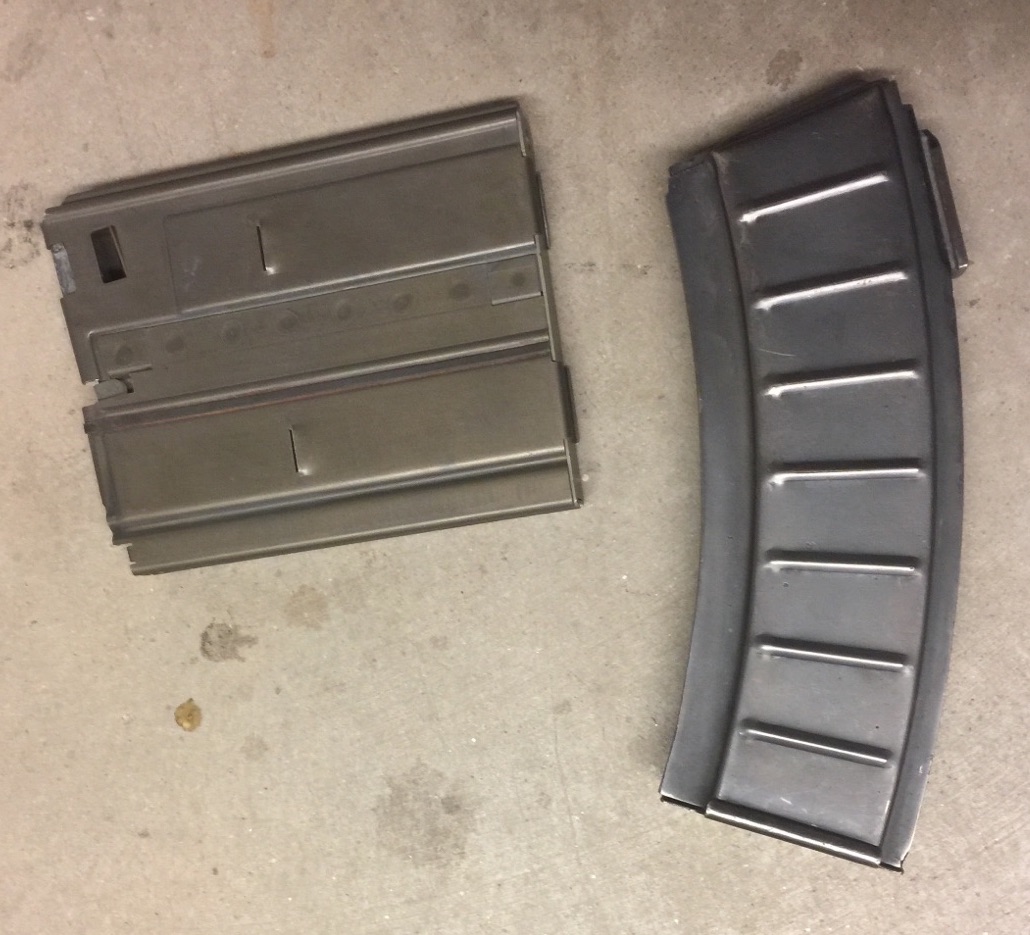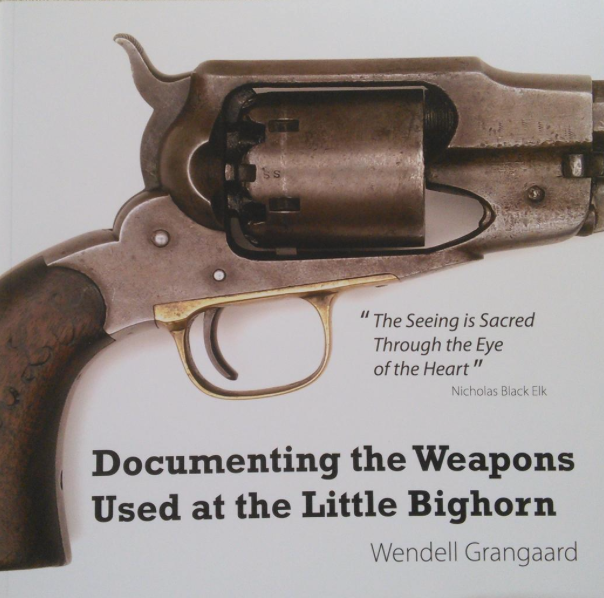John Moses Browning is, without argument, the greatest firearms designer in history. While we have had many brilliant designers who had their names forever connected to guns (Maxim, Luger, Kalashnikov…), Browning invented whole *categories* of firearms. Gorenstein’s new book “The Guns of John Moses Browning” is a welcome biography of the man, giving great insight into Browning’s life and work. The book is well researched, well written, and thoroughly engaging. It is also worth noting that Gorenstein is himself a competitive shooter, and understands the world that Browning operated in.
I think my back-cover blurb for the book (for which I received no compensation; full disclosure) sums it up well:
Following Browning from his birth in rural Utah to his death in urban Belgium, we see how a changing world shaped his inventions and how, in turn, his inventions shaped a changing world.
Browning began in the last years of the Wild West inventing lever action rifles, then became a major part of the blossoming of the automatic pistol, then invented the semiauto shotgun before designing the modern machine guns that become iconic to the United States’ involvement in two world wars. It is a tremendous story, and Gorenstein’s book lays it all out for the reader.




Watching Legacy Collectables, CNAresnal and Ian on Samuel Colt and on JM Browning I’m wondering if Colt was a bit of a charlatan – there’s debate as to whether the Paterson was the first revolver, his poor treatment of his gunsmith (I forget his name) etc.
Or is his greatness based on his taking guns from the ‘Chemical’ into the ‘Mechanical’ age. Prior to him wasn’t it blackpowder,single shot guns, and he brought in mechanics. Was this his greatness, while Browning’s focus was on making guns better mechanically?
I realise that I’ve not done a good job in framing my question but hope folks can see my point.
What is CNArsenal? Is this pun intended against Phenacyl Chloride?
“(…)Paterson was the first revolver(…)”
How it could be if earlier COLLIER FLINTLOCK REVOLVER existed?
Samuel Colt himself states in https://patents.google.com/patent/USRE124E/en?q=fire-arm&inventor=Samuel+Colt&oq=Samuel+Colt+fire-arm
…principle or mode of operation which distinguishes my invention from allother things before known consists, first, in combining the rotating breech with the lock in such manner that by operating the cock the breech shall be rotated to bring the charges in succession to the line of the barrel for the discharge…
therefore acknowledging prior existence of
firearms in which a series of parallel chambers for containing the charges are made in a rotating breech, so placed in connection with the barrel that by the rotation of the said breech the charges are in succession brought in aline with the barrel for discharge.
It is actually “C&Rsenal”, a YouTube channel.
https://www.youtube.com/channel/UClq1dvO44aNovUUy0SiSDOQ
Othais and May are the two main on-screen personalities. Ian has collaborated with them in the past, and I’m surprised you don’t recognize the admittedly scrambled description.
Ok, I admit I do not known all possible aliases used for all fire-arms sites and I do not expect usage of alias (rather than name itself) when not provoked.
The gun business is not for “enlightened geniuses” who sit in the ivory tower of isolation. Developing better products is for those who get up close and personal with materials. I could be wrong…
But perhaps Mr Browning was an enlightened genius? I’ll read the book and maybe find out.
I was being sarcastic. When I spoke of “enlightened geniuses,” I referred to people who philosophize about things but have NO CONTACT WITH THE MATERIALS OR SUBJECTS ABOUT WHICH THEY THINK. Imagine a man claiming to be a scientist who doesn’t even know the basics of science (namely that science is a study by means of observing phenomena). Imagine that he claims that the sun rises because a giant kicks it out of bed every morning. Is the man a scientist?!
The book tells us that there was a second autoloading shotgun before the famed Browning Auto 5. This shotgun lead to a lawsuit by Luger against Winchester and Browning.
The book gives a background to the breakup between Winchester and Browning. The author does not give any real details on the designs of Browning but tells us how Browning designed his firearms. Well worth while buying!
“(…)John Moses Browning is, without argument, the greatest firearms designer in history.(…)”
Naturally I have to disagree. For me greatest firearms designer goes to Ferdinand von Mannlicher which also developed numerous various, despite working in Austria-Hungary AND not living during global conflict which fueled need for all types of weapons, introducing “en-bloc” loading which influenced many many design.
I must respectfully and regretfully disagree a little. Mannlicher created many widely different designs, and all his prototypes worked, and I think he was awarded approximately the same number of patents as Browning; but in that many of his designs were never manufactured, and many of his others were so difficult or expensive to manufacture that they did not last in production, I think he can only be ranked the greatest firearms designer of the Eastern Hemisphere. Certainly packet loading is important, and he seems to have invented the first real self-loading rifle (1885; never went past prototype stage, I think), but in overall world-wide influence I think he must be rated below Browning. Browning’s designs contemplated not only shooting effectiveness but ease of use by the shooter and ease of manufacture (not least because he made the prototypes in his home machine shop). I would also mention his range of designs, from 6.35 pocket pistol to 37mm fully automatic cannon.
The title of the YouTube channel “C&Rsenal” is a pun, the “and” from “C & R” meaning Curios and Relics (the category of antique guns in US law); and the “R” sound (“Ar”) standing for the first vowel in “Arsenal.” Appropriate to their channel, which primarily examines firearms from the First World War. Their presentation is somewhat jokey but their scholarship seems very solid.
As usual, I recommend to all the biography of JMB by his son J. Browning, with Curt Gentry, entitled “John M. Browning, American Gunsmith.” Out of print but available.
“(…)many of his others were so difficult or expensive to manufacture that they did not last in production(…)”
That being said Mannlicher repeating rifle was developed further in Hungary in produced into 1940s http://hungariae.com/Mann35.htm
“(…)would also mention his range of designs, from 6.35 pocket pistol to 37mm fully automatic cannon.(…)”
Ferdinand von Mannlicher died in January 1904 therefore has no chance to respond to either of mentioned desigsn (6,35 mm Browning cartridge was introduced in 1906, second was anti-aircraft and with level of aviation technology in 1904 I guess very few could believe in tens of year they will be useful for wreaking havoc)
“(…)The title of the YouTube channel “C&Rsenal” is a pun, the “and” from “C & R” meaning Curios and Relics (the category of antique guns in US law); and the “R” sound (“Ar”) standing for the first vowel in “Arsenal.” Appropriate to their channel, which primarily examines firearms from the First World War. Their presentation is somewhat jokey but their scholarship seems very solid. (…)”
Thanks for explanation, I was quite confused by discussion of Samuel Colt which is definitely far from “firearms from the First World War”.
They were referring to Samuel Colt’s personality, which seems to have been one of relentless ambition, exploitation and self-promotion, compared to the modest and self-effacing Browning. C&Rsenal publishes a separate series on reproduction percussion arms.
Excellent. Just ordered.
Take the point on Mannlicher, but JMB was extraordinary. All others (FRvM, the Mausers, Garand, Borchardt, Luger, Kalashnikov,Saive, Stoner, Glock,, etc etc) are an order of magnitude below his level of skill and achievement.
It’s probably not entirely fair to compare JMB with any of the WW2 or later firearms designers. He lived during an era with very rapid general development and innovation in firearms, which allowed him to maximize his potential as a designer. The later guys did not really have that possibility to a same degree. Since the 1930s firearms design was also becoming more like other areas of engineering where the talent of a single person was less important and designing was and is more a collective effort.
Also M.T.Kalashnikov worked in country which highly prized central planing which, mildly speaking, does not promote one’s own initiative.
Fair comment.
Clever designs are a dime a dozen. But a clever design that can be put into production, is successful right away without years of tweaking, and then stays in production for decades and decades–that is an entirely different category. To do that over and over again, from sporting pistols to shotguns to rifles to military pistols to heavy machine guns, and to invent new types of action along the way, that will never be equaled again. And there were clever designers back then, Pedersen for example.
Browning designs still in production more than 90 years after his death: Ithica 37 Shotgun (2 million+ made), M2 heavy machinegun (3 million+ made), Winchester 94 lever rifle (7 million+ made), and the Colt 1911 Pistol (7 million+ made). Probably HiPower clones are still made somewhere, and I think Browning sells SuperPosed shotguns special order.
If anyone else has a handgun, a shotgun, a rifle, and a machinegun they designed, still in production, each with a million plus sales, nearly a century after his death, then we can debate if that person might be the equal of Browning.
Miroku (?spelling) make exact clones of the Browning over and under, for “Browning”, and with slight changes to the heat treatment of the strikers, under their own name.
They also make small runs of 1895 lever actions, including a few in .401.
Franchi also make a cheapened derivative of the Browning long recoil semi auto shotgun.
Pietta, manufacture the 94 lever action and earlier lever actions too
IIRC, Pietta also make the highwall and low wall single shot rifles.
Interesting examples of less celebrateds, would be Anson and Deeley, who created the first successful hammerless break open action, the “boxlock”, produced in the tens of millions, and still produced in all levels of quality today.
Boss, whose shallower depth over and under, forms the basis for most over and under shotguns today, including those made by Beretta.
Paul Mauser, who’s 98 was manufactured in the millions, and, despite millions of old military rifles still in existence, it is still being made new, with Santa Barbara and Zastava in producing for the mass market, Mayfair, Hartmann & Wiess, “Mauser” and several others, producing for the high and very high end.
The Holland & Holland “Royal”, that forms the basis for almost all “Side-lock” break actions world wide, and still being made in medium and high end (there are no low end side-locks).
The Beesley side-lock which forms the basis of Purdy’s guns, is more complicated to make correctly than the H&H Royal, but even it has been copied, even for Soviet Premiers (see Ian’s piece on Kruschov’s shotgun).
“(…)HiPower(…)”
As known today it is effect of efforts of John M. Browning and Dieudonne Saive
https://modernfirearms.net/en/handguns/handguns-en/belgium-semi-automatic-pistols/fn-browning-hp-high-power-eng/
After watching your review, I ordered “The guns of John Moses Browning”. What a well written book. It goes into details of the guns he invented and gives a lot of detail on John’s personal life and his family as well.
Back in the mid 60’s I bought a very nice Browning Sweet 16 shotgun and nicknamed it “John Moses”. After all these years, the only time it would not feed properly was when I would have it set for heavy loads and would put some “low brass” rounds in it.
Thanks for doing the book review on this great book.
great book as for me